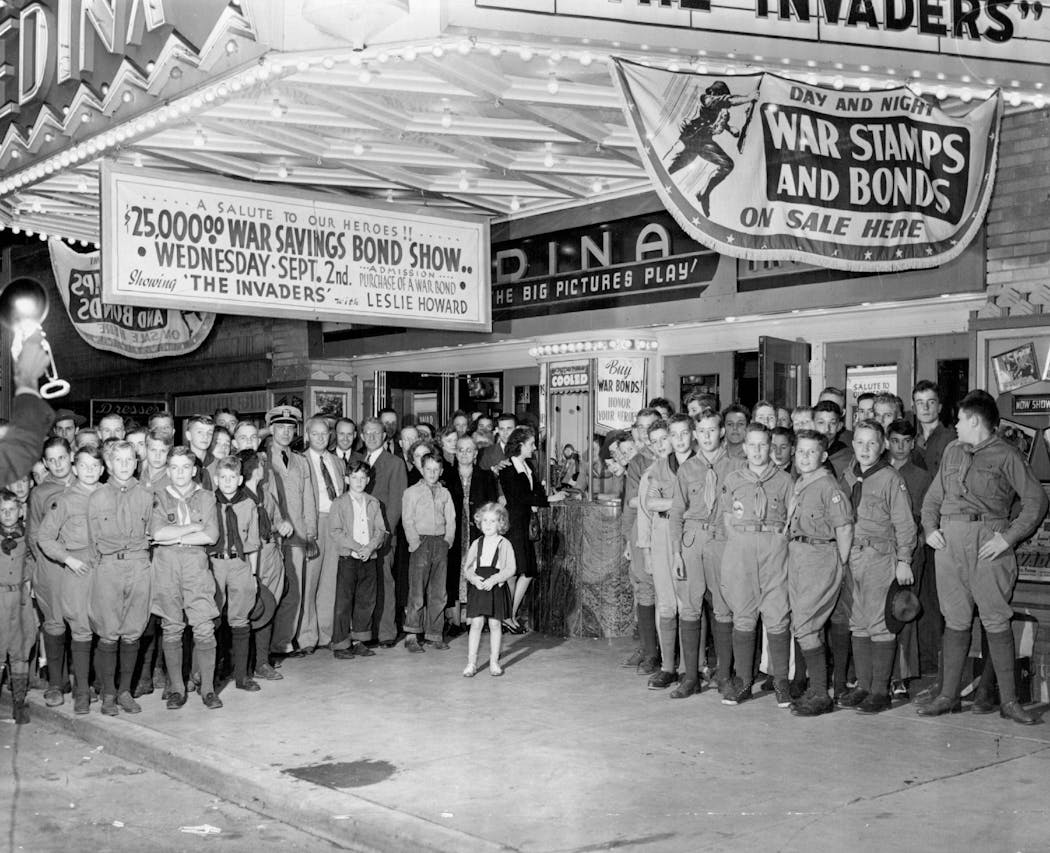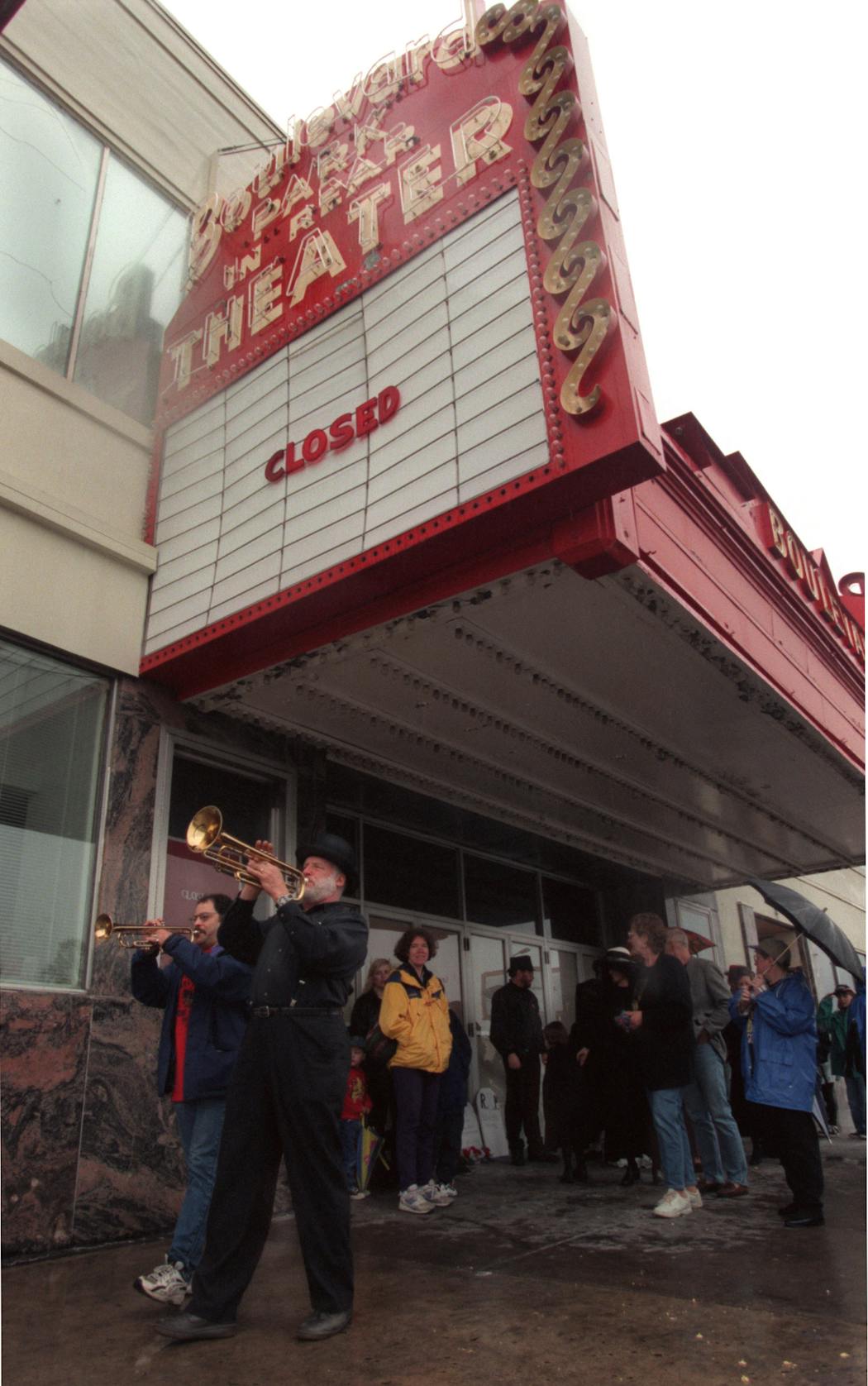If a bank branch closes, they take a crowbar to the logo. If a Burger King shutters, no one petitions the city to declare the sign a landmark. But when a neighborhood movie theater closes, there's an unspoken rule: Don't you dare touch that marquee.
Neighborhood theaters have a unique spot in the urban landscape. To the locals, they're often one of the few artifacts of a bygone era — especially when a marquee has been burning holes in the night since the days of FDR.
If you've been through Edina lately, you may have noticed that the eponymous theater has reopened. The marquee is now bright red. You hope it stays in the black.
Neighborhood movie theaters have been hammered for decades by familiar foes — TV, home video, massive multiplexes that offer 16 screens and modern comforts. Add COVID, and it's a miracle any small movie houses survived. The Edina was closed for a while, and few thought it would return. But it has.
Reopening the theater almost seems audacious. And generous: It's in prime commercial territory, after all. They could've converted it to offices and boutiques, and kept the marquee as a quaint relic that gave you all the nostalgia feelings.
It certainly wouldn't be the first time the theater left and the sign stayed.
The old Lyndale theater (2932 Lyndale Av. S., Mpls.) hasn't shown movies since 1954. Built in 1915, it's spent more of its life not being a movie house than it spent showing films. But it still looks like a movie theater, mostly due to the marquee.
The Wayzata (619 Lake Street E., Wayzata) was built in 1932, designed by Liebenberg and Kaplan, the same firm that did the Edina, the Uptown, the Varsity and other Minnesota landmarks. It closed in 1985, the building converted to commercial purposes, but you'd better believe they saved the landmark sign.
The Boulevard Theater (5315 Lyndale Av. S., Mpls.) hasn't shown a movie in almost four decades, but you know what it was: There's a big blocky marquee that still blares the name. If the sign was gone, it wouldn't look like a movie theater. It could be any unadorned 1930s office block. The marquee tells you it was special.
But special how, exactly?
Because it was the embassy of dreamland. A dark room inhabited by the citizens of an imaginative world. Newsreels, cartoons, travelogues, snappy murder mysteries, prestige productions in which elegant thin people in tuxedos tap-danced down alabaster staircases. We imagine everyone coming out of the theater flushed and thrilled, and getting a soda at the drugstore before heading home on a trundling trolley. Better, simpler times, and all that.
When we see an old marquee, we romanticize everything about it. We never think of the bored ticket-taker, the usher who wished he had a better-fitting suit, the projectionist sweltering in the booth in July, the manager fretting over the receipts.
And we rarely think of how the old theaters ended: threadbare seats that squealed when you sat down. Walls stripped of ornamentation, called "modernizing." An undersized screen that played movies of diminishing quality.
Most of the neighborhood theaters closed because people stopped going to them. That's the obvious lesson — and the hardest to learn.
Things might be different today, though. Small theaters in walkable neighborhoods ought to do well. Imagine your neighborhood with a marquee that shone in the winter gloom or summer twilight, the twinkling enticements that still ignite something sympathetic in the modern heart. Imagine thinking, again: That's our movie house.





